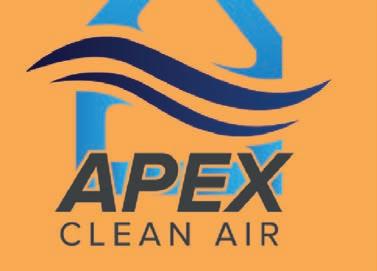

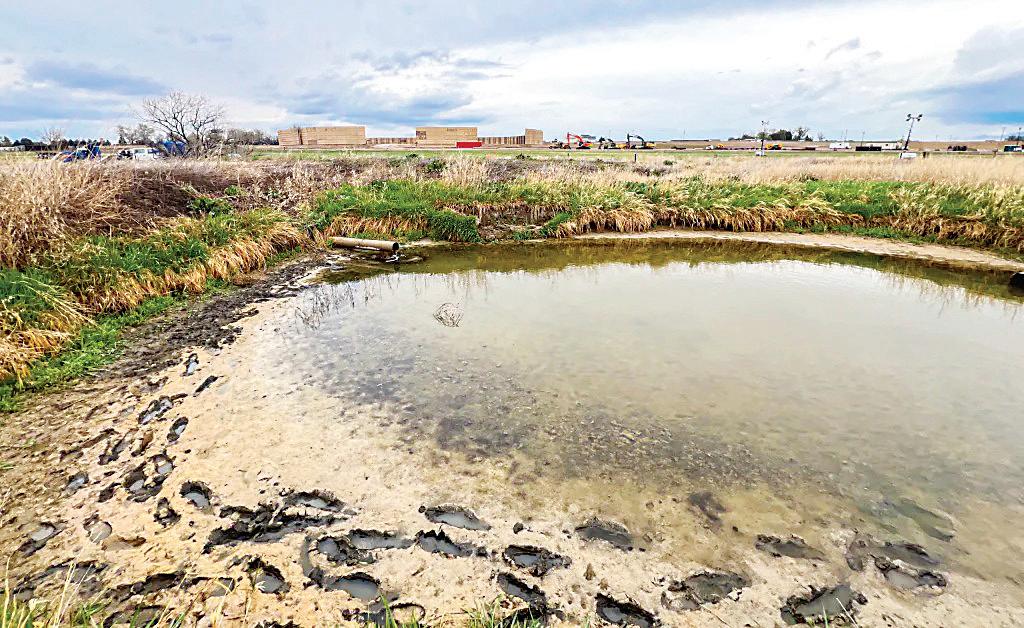






Weld County families displaced after ‘unprecedented’ incident
BY CHASE WOODRUFF
NEWSLINE COLORADO
Colorado regulators have launched an enforcement action against oil giant Chevron for an April well “blowout” that caused evacuations and closures in a community in eastern Weld County.
O cials with the Energy and Carbon Management Commission said that some residents remain displaced from their homes in tiny Galeton, an unincorporated town of 250 people located about 10 miles northeast of Greeley, nearly three months after the incident at Chevron’s Bishop well pad.
e well failure caused a high-pressure ow of oil, gas and water to spew from the site for ve days before emergency crews were able to bring it under control. With millions of gallons of uid released, it’s believed to be one of the largest oil and gas spills in state history, and the resulting plume spread dangerous levels of toxic chemicals as far as two miles away, according to data from Colorado State University researchers.
“I can say with certainty that this is signicant and unprecedented during my tenure,

not just in terms of volumes released … but in terms of complexity, in terms of scale of impact to environmental services, as well as residents,” said Je Robbins, who has served as chair of the ve-member ECMC board of commissioners since 2020.
A so-called notice of alleged violation issued by ECMC sta to Chevron subsidiary Noble Energy lists six di erent breaches of the agency’s rules, initiating what is likely to be a lengthy regulatory enforcement action. e notice accuses Chevron of violating water quality standards, breaking employee safety rules, “fail(ing) to engineer and operate all equipment within the manufacturer’s recommended speci cations,” and more.
An initial analysis completed by Chevron earlier this month identi ed the root cause of the incident as “improper assembly” of on-site equipment by a contractor. A total of 16 oil and gas wells were planned to be drilled on the Bishop site as part of a development plan approved by the ECMC in September 2022.
As part of the enforcement process, ECMC sta will calculate penalties against Chevron that will then be adjudicated by commissioners. Greg Duranleau, the ECMC’s deputy director of operations, said the penalties were “one piece of thenancial impacts this incident may have on Chevron.”
“ ere may be civil settlements for damage, there’s a possibility for other agencies to enforce their regulations, and of course, there’s the cost of the response and cleanup,” Duranleau told commissioners during a special public hearing on ursday.
Four of 14 families that were evacuated from the Galeton area after the blowout remain displaced from their homes, according to Chevron.
“We continue to actively work with the remaining residents on the next steps, including getting access to their properties to conduct assessments and cleaning,” the company’s website says.
An extensive cleanup and remediation e ort is underway, a process that Chevron estimates could take up to ve years. ousands of environmental samples have been taken across a 7-square-mile “assessment area” centered on the well site, sta told commissioners.
“I am optimistic that Chevron will work with us through the enforcement process to bring a timely resolution,” ECMC Director Julie Murphy said in a statement. “And I am grateful to the many folks at Chevron who are working diligently to remediate the signi cant impacts of this incident.”
is story is from Colorado Newsline. Used by permission. For more, and to support the news organization, visit coloradonewsline. com.
Colorado updates rules for eligibility before the 2025-26 year begins
BY SUZIE GLASSMAN SUZIE@COTLN.ORG
Starting July 1, families in Je erson, Adams and Weld counties can apply for free and reduced-price school meals for the upcoming 2025–26 school year.
While many schools in the area now o er free meals through Colorado’s Healthy School Meals for All program, the state still requires all families to complete the household income form.
And it’s not just about meals. e household income form helps determine how much state and federal funding a school district receives for programs that support low-income students, including Title I services, fee waivers and grant eligibility.
State education o cials encourage all families to complete the application, regardless of whether their child attends a school that offers universal free meals.
“When families ll out this application, they help unlock essential funding that supports students and schools across Colorado,” said Education Commissioner Susana Córdova. “Strong participation from families makes a real di erence.”
Families should apply if they have experienced a recent drop in income, receive SNAP, TANF or Medicaid, have children in foster care or Head Start or face housing instability.
Submitting the form can have a signi cant impact, even in schools that provide meals to all students.
How to apply
Families can nd applications online — at www.cde.state.co.us./ nutrition/determine-programeligibility — or through their local school. Families only need to complete one application per household.
A publication of

Commerce City Sentinel Express (USPS 3886)
A legal newspaper of general circulation in Commerce City, Colorado, Commerce City Sentinel Express is published weekly on Thursday by Colorado Community Media, 143 S. 2nd Pl., Brighton CO 80601.
PERIODICAL POSTAGE PAID AT Commerce City and additional mailing o ces.
POSTMASTER: Send address change to: Commerce City Sentinel Express, 750 W. Hampden Ave., Suite 225, Englewood, CO 80110
Call first: 143 S. 2nd Pl., Brighton, CO 80601
Mailing Address: 750 W. Hampden Ave., Suite 225 Englewood, CO 80110
Phone: 303-566-4100
Web: CommerceCitySentinel.com
To subscribe call 303-566-4100 or Scan this QR Code

STEVE T STRICKBINE
President steve@timeslocalmedia.com
NADINE JOHNSON Director of Operations nadine@timeslocalmedia.com
NICK OLIVERI Director of Sales nick@timeslocalmedia.com
COURTNEY OLDHAM Production and Design Director production@timelocalmedia.com
DYLAN LOTTS Editorial Supervisor dlotts@coloradocommunitymedia.com
ERIN ADAMS Advertising Director eadams@coloradocommunitymedia.com
LINDSAY NICOLETTI Operations/ Circulation Manager lnicoletti@coloradocommunitymedia.com
Columnists & Guest Commentaries
Columnist opinions are not necessarily those of the Standard Blade.
We welcome letters to the editor. Please include your full name, address and the best number to reach you by telephone.
Email letters to letters@coloradocommunitymedia.com
Deadline Tues. for the following week’s paper.
BY BELEN WARD BELEN@COTLN.ORG
Adams County is encouraging individuals interested in making a di erence in their communities to apply for a seat on the 28 citizen advisory Boards, according to a June 25 news release.
Commissioner Julie Duran Mullica, Vice Chair, Adams County Board of Commissioners, said serving on volunteer and advisory boards is how she got her start.
“ roughout my time in public service, and even before, I have served on many di erent advisory boards, commissions, and committees, and those experiences hold a special place in my career and in my heart,” Mullica said. “ ey not only gave me a deeper understanding of how local government — and the community about which I deeply care —


Mullica
works, but they also helped me build relationships with neighbors and leaders who were passionate about making a di erence.”
Duran-Mullica said residents serve as board members and can bring experience from various elds to contribute their expertise. e boards can focus on planning, zoning, open spaces, a ordable housing, public health, veterans’ services, and the library. eir advice helps create policy, develop and strengthen programs, and their decisions represent the community.
“Now, as Vice Chair of the Board of Commissioners, I continue to be grateful for the invaluable insight and dedication our citizen boards bring to the table. ese volunteers
are trusted partners in the county’s decision-making process, and their voices matter,” Duran-Mullica said. “If you care about this community — and I know you do — I encourage you to nd a board that speaks to your passions and apply. Whether you’re interested in cultural programming, economic development, re and building codes, or simply giving back in a meaningful way, there’s a place for you.”
To apply for this round of vacancies, please submit your application before the deadline on July 3. Interviews will be held later in the month. For more information about the 28 board positions and to apply online, visit adcogov.org/joinaboard.
“Adams County’s government is here to serve you, so you should have a seat at the table. ere’s a chair waiting for you,” DuranMullica said.
BY JOHN RENFROW JOHN@COTLN.ORG
Summertime is in full bloom in Colorado, meaning perfect temperatures and picturesque backdrops for some hiking, camping and stargazing along the Front Range and beyond.
But in such a saturated state for adoring nature, plus those weekend crowds on I-70, how do you know where to start? Just like trying to pin down a hike on AllTrails, it can feel like spotting a needle in a haystack. You don’t want somewhere too crowded, too far away or all booked up with reservations. Plus, where you pitch a tent for the night may determine the extent of supplies you’ll need.
e Colorado Trust for Local News asked experienced locals where to start when looking for ideal camping nights in the Centennial State. Take notes from the testimonials below.
Important note: Always check campground rules and regulations before hitting the road and settling down for the night. Camping in the wrong areas is illegal and could result in nes or criminal charges.
Dispersed camping
“ ere are a couple of places south of Buena Vista. ere’s a road out there that I like going to. It’s a little bit more traveled, but I found camping there last weekend ... it’s really close to town near Browns Creek Trailhead. And this is dispersed camping (I camp with a camper. I’m not a tent camper, I’m a camper camper). It gets real close to town, and it’s quiet back in here, and there’s a trailhead right there where I like to camp.”
-Joe Lopez, Arvada
Awesome spaces in Deckers


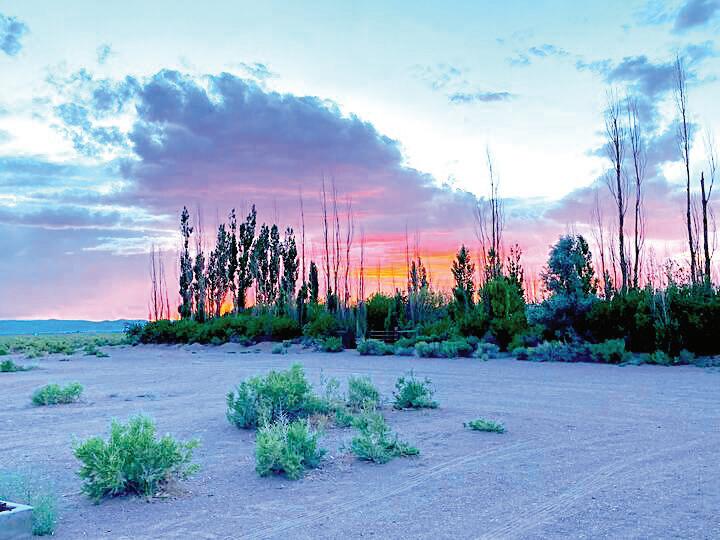
tion, really nice and not a crazy hike, but very beautiful. en Wolford Reservoir is great for next-to-water camping and large groups. For a camper-accessible option, the River Campsite near Estes Park would be a good option.”
-Lori Abbey, Arvada
Riverside camping

Secluded and private
“I love Guanella Pass because it’s just easily accessible, provides beautiful water and valley views and feels secluded and private.”
-Shelby Andress, Denver
Falls and dunes

Colorado Community Media asks readers to make us aware of mistakes we may have made.
Email sgilbert@coloradocommunitymedia.com if you notice a possible error you would like us to take a look at.

“Down just o US 285, just south of it, that whole region is called the South Platte. In the northern portion of the South Platte, the Deckers area as a whole, there’s a lot of open space land and BLM (Bureau of Land Management) land. In that, you can nd a lot of awesome spaces there. Potentially, some of them are free to just go camp. You just pull your car right to the spot. ere’s no one around, usually, and you just pitch your tent or park your RV and you’re camping.”
-Angus Applegarth, Evergreen Fire Protection District
Options for campers or for backpackers
“ ere is one trail that leads you to Horse Shoe Campground in Golden Gate State Park, which is a backpack-in-and-out situa-
“Poudre Canyon is probably my No. 1. It’s easily accessible and the drive out is beautiful. Along the canyon is the Poudre River that has accessible beaches for chilling, shing and tubing. ere’s also guided white water rafting before my favorite spot, a restaurant/venue called Mishawaka Amphitheater, which is always a good stop for a beer and lunch by the water. e great part about the canyon is that there’s camping by the water and up on the mountain. Some spots are paid, but others are BLM.
I also really enjoy the Black Canyon of Gunnison National Park. ere’s a load of free camping nearby and it’s a jaw-dropping experience, from the drop o to the views. I remember getting in late for my rst visit and setting up camp, excited for the canyon. Waking up, I expected nothing, but walked out and felt like I was shot back to prehistoric times. Absolute beauty.”
-Jimmy Garcia, Northglenn
“We really enjoy camping at the Great Sand Dunes, for obvious reasons. Zapata Falls is only about seven miles south of the sand dunes. It’s a really wonderful spot to go visit, and right now it’s actually glacial, so you need crampons to get up in there, but it’s beautiful. We camp a lot at Carter Lake just because it’s so convenient. It’s relatively inexpensive, it’s a good place to go sh and go exploring.
We have a 30-foot camper, travel trailer, so we have to rent a space like six months in advance. But there are tent sides all over the place. e cool thing about that, too, is you can go from dome tent campsites to the walkin, double-room ones. It’s all really at. On the south campground, there’s a boathouse so you can rent whatever you need. If you go to the marina, you can actually rent a boat and kick around. We like to take our paddle boards into a couple coves ... gosh, just lay on your back, stare at the sky and fall asleep for a while, let the water just take you where you go.”
-Keith Hancock, ornton
The bill as passed by the Senate included NAR’s five key priorities:
A permanent extension of lower individual tax rates
An enhanced and permanent qualified business income deduction (Section 199A)
A temporary (five-year) quadrupling of the state and local tax (SALT) deduction cap, beginning for 2025
Protection for business SALT deductions and 1031 like-kind exchanges
A permanent extension of the mortgage interest deduction
Low-Income Housing Tax Credit (LIHTC): Key provisions from the LIHTC Improvement Act are included on a permanent basis to support affordable housing development.
No Changes to Carried Interest Rules
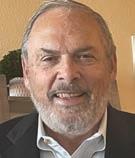

“These provisions form the backbone of the real estate economy—from supporting first-time and first-generation buyers to strengthening investment in housing supply and protecting existing homeowners,” according to a NAR spokesperson. “Real estate makes up nearly one-fifth of the entire U.S. economy, and we made sure policymakers understood that homeownership is the essential component to building wealth and a strong, prosperous middle class.”
Several other provisions in the bill championed by NAR add to its positive impact on the real estate sector:
Child Tax Credit Increased to $2,200: Permanently raises the credit, with inflation indexing. This provision could ease housing affordability for families.
Permanent Estate and Gift Tax Threshold Set at $15 Million (Inflation-Adjusted): Prevents a sharp drop in exemption levels and supports generational wealth transfer.
No Increase to the Top Individual Tax Rate: The proposed 39.6% rate was removed from the bill.
Restoration of Key Business Provisions:
Full expensing of research and development
Bonus depreciation
Fixes to the interest expense deduction limit
Immediate Expensing for Certain Industrial Structures: Applies to facilities used in manufacturing, refining, agriculture and related industries.
Clickable links for each column can be found at www.JimSmithColumns.com
May 29, 2025 — Divorcing Couples With a Home Need a Realtor With Specialized Training
May 22, 2025 — Home Sharing Helps Single Seniors Deal With Finance and Loneliness, Allowing Them to Age in Place
April 24, 2025 — Lennar to Build 1,500 Geothermal Homes; My Review of the Mustang Mach
E
April 17, 2025 — Redfin Report Highlights the Increasing Cost of Buying versus Renting a Home
April 10, 2025 — The Typical Wood-Frame, SiteBuilt Home So Common Since the ’90s May Soon Be a Thing of the Past
Mar. 27, 2025 — Here’s How Money Is Handled at a Real Estate Closing
Mar. 20, 2025 — Thinking of Using a Reverse Mortgage to Purchase a Home? Here’s Some Information
Mar. 13, 2025 — Will Colorado Be Able to Sustain Its ‘Green Agenda’ Under Pressure From Washington?
Mar. 6, 2025 — 62% of Americans Think a 20% Down Payment Is Required, But It’s the #1 Myth
Feb. 27, 2025 — As Society Deals With Homelessness and Affordability, Expect a Greater Focus on Manufactured Homes
Feb. 20, 2025 — We Have a Tool to Help You Find the ‘Perfect’ Home That’s Not on the MLS
Dec. 26, 2024 — As Pro-Tenant Laws Expand, Some Small Landlords Are Considering Cashing Out
Dec. 19, 2024 — What Are the Costs of Buying or Selling a Home in Colorado?
Nov. 7, 2024 — We Need to Take Seriously the Pollutants Emitted When Cooking With Gas
Oct. 31, 2024 — Cooperative Living Presents an Attractive Alternative for Downsizing Seniors
Sept. 26, 2024 — Some Thoughts on Keeping Your Death From Becoming an Undue Burden on Your Heirs
Sept. 5, 2024 — What Knowledge and Skills Should You Expect Your Real Estate Agent to Have?
Aug. 8, 2024 — Seniors Over 70 Might Consider Downsizing Into a Rental, Not a Smaller Home
July 25, 2024 — Many Homeowners Don’t Understand Title Issues, Which Could Lead to Big Problems Later On
June 6, 2024 — Here Are Some Simple Steps to Take to Avoid Unpleasant Surprises After Closing
Mar. 21, 2024 — What’s Behind the Buzz About ‘Indoor Air Quality’ and ‘Sick Building Syndrome’?
Feb. 22, 2024 — Most Sellers Don’t Know How to Interview a Listing Agent. Here’s Some Guidance.
Dec. 21, 2023 — D.R. Horton Inks Deal to Build Homes With OSB Made From Grass Instead of Wood
Nov. 23, 2023 — Scamming Has Become An Industry, and We’re All Prospective Victims
Sept. 28, 2023 — Insurance Companies Are Pulling Out of California. Is That in Our Future?
Aug. 10, 2023 — What Are Some Common Mistakes That Homeowners Make When Selling?
June 15, 2023 — Don’t Let Capital Gains Tax Deter You From Cashing Out on an Investment Property
May 11, 2023 — Do Agents Inflate the Cost of Buying or Selling Your Home with ‘Junk Fees’?
Apr. 20, 2023 — What Are Some Affordable Ways to Make Your Home More Attractive to Buyers?
Mar. 16, 2023 — Here Are Some Ways to Make Your Home More Accommodating to Seniors
Feb. 9, 2023 — Understanding Indoor Air Quality and How It’s Managed in Super-Insulated Homes
Oct. 27, 2022 — Sales Taxes May Be Lower, But Property Taxes Are Higher in Unincorporated Areas

Strengthened Opportunity Zones: Renewed with revised incentives to promote targeted investment, including in rural areas. NAR polling found that 80% of voters support such tax incentives to drive economic development in underserved communities.
The deadline for this ad was last Friday, before the House of Representatives took the Senate bill up for approval. NAR is hopeful the provisions detailed above will remain in the final version of the bill.
This article was adapted from an email newsletter article I received from NAR. I made only minor edits to it.
The following charts were provided by Samanth Glenn of Land Title, along with this summary of the market for June 2025:
The Greater Metro Denver housing market saw active listings continue to grow in June — a 33% increase when compared to last year at this time. New listings declined when compared to last month (-19%) but were up 3% when compared to last year. Pending sales (demand) increased 6% when compared to last year, but did see a slight decline when viewed month-over-month.
The average days on market remained high at 35 days, an increase of 30% year over year. More highlights are below.
In June, active listings were down 0.2% month-over-month but remained elevated when compared to June 2024, which saw 9,866 active listings.
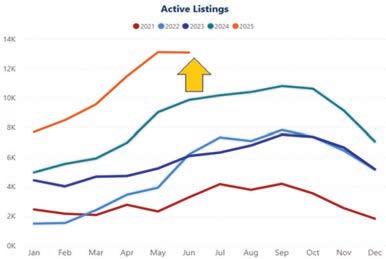
June saw 5,582 new listings enter the market. This data point decreased 18.7% when compared to last month, which saw 6,869 new listings. Last year at this time we saw 5,446 new listings.
Pending sales decreased by 3% when compared to last month. Last year at this time we saw 3,777 pending sales.

Look at how the months of inventory (unsold lis ngs) compare to prior years:



The ra o of closed price to lis ng price (99.1%) was the lowest of the past ve years:

June saw the average days on market at 35. Last month saw 33 days and last year at this time saw 27 days, on average.
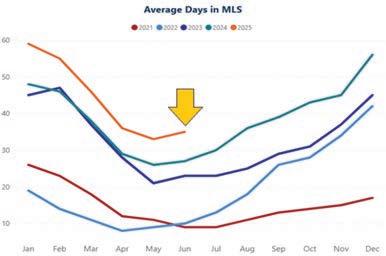
The number of showings per listing for June was at 4.6. This was a decrease of 6.1% compared to last month. Last year at this time we saw 5.2 showings per listing, on average:

More readable versions of these charts are at http:RealEstateToday.substack.com


Westminster horticulturist has waited 25 years for City Hall plant to bloom
BY MONTE WHALEY MONTE@COLORADOCOMMUNITYMEDIA.COM
Shalene Hiller couldn’t pick a better partner to celebrate her 25th anniversary as a City of Westminster horticulturist than a 10-foot-tall agave plant that will produce its one and only harvest of colorful owers in just a few days. en, after spreading its beauty, it will wither and die, Hiller said. “It’s grown with us for 25 years and now it’s going to bloom,” she said. “It’s
so rare that this is happening. I am so excited.”
Agaves only bloom once every 20to-25 years before they expire, say experts. But don’t despair, most agaves make “pups” or vegetative o shoots that replace the parent plant after it dies.
Hiller has been keeping a close watch on the succulent, which resides outside of Westminster City Hall at 4800 W. 92nd Avenue. Tiny blooms are starting to emerge, and she gures a full bloom may come later this week.
“All this time it has never bloomed,” Hiller said. “I thought maybe after ve years, 10 years or 15. Nope, it has stayed right on schedule.”
Hiller rst planted the agave plant at the city’s Walnut Creek Golf Course
not long after she was hired. She adopted the plant for the city 25 years ago because she thought it was pretty.
Although native to drier and much warmer climates, the agave has shown some true Steel Magnolia tendencies, Hiller said.
“It’s survived snow, sleet, high winds and just about everything else, and stood tall,” she said.
It also survived a move to City Hall as irrigation work at the golf course prompted her to relocate the agave to the outside ower garden.
Hiller is also quick to point out that this species of agave plant does not produce tequila. Only the blue agave does that, she said.
“No, this is just a tall, really interesting plant,” Hiller said.

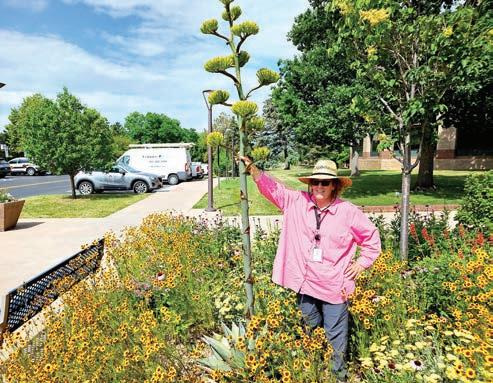
Colorado joins 19 other states to stop transfer of Medicaid data to ICE
Colorado is joining a multistate coalition in a lawsuit to block the mass transfer of individual personal data to the Department of Homeland Security and Immigration and Customs Enforcement.
Attorney General Phil Weiser and his counterparts in 19 states are suing the U.S.
Department of Health and Human Services, according to a press release issued by his o ce.
e attorneys general said the mass transfer of the data violates the law and asked the court to block any new transfer or use of this data for immigration enforcement purposes. e suit was led in the U.S. District Court for the Northern District of California.
“ e personal health care data collected about Medicaid bene ciaries is con dential, to be shared only in narrow circumstances that bene t public health and the integrity of the Medicaid program,” said Weiser, a Democrat. “ ere’s no reason to
share this sensitive data with immigration or law enforcement agencies. We’re suing to protect Colorado’s Medicaid program and the health and welfare of the people it serves.”
In early June, the Centers for Medicare and Medicaid Services, orCMS, the federal agency that administers the nation’s health program for low-income Americans, made a “lengthy and detailed”data requestto Colorado’s agency that administers Medicaid, according to Marc Williams, public information o cer with the Department of Health Care Policy and Financing. e request was made to seven other states, he said, without providing details on which ones.
in full compliance with all applicable laws – to ensure that Medicaid bene ts are reserved for individuals who are lawfully entitled to receive them.”
“Colorado’s immigrant communities should never have to fear that accessing life-saving care could lead to detention or deportation,” said Nicole Cervera Loy, Policy and Campaign Manager at the Colorado Immigrant Rights Coalition, in an email to CPR. “ is unprecedented request for sensitive health data is not about program integrity—it’s about surveillance and punishment. We call on state leaders to reject this directive and uphold Colorado’s values of dignity, safety, and care for all.”










eAssociated Press reportedCMS has shared personal information of Medicaid from people living in California, Illinois, Washington state and Washington D.C., with the Department of Homeland Security, the agency in charge of immigration enforcement and the administration’s deportation push.
In response, advocacy groups in Colorado raised a variety of privacy, safety and health concerns.
An HHS spokesperson told CPR last month the request was within the agency’s authority.
“HHS and CMS take the integrity of the Medicaid program and the protection of American taxpayer dollars extremely seriously,” said U.S. Health and Human Services spokesperson Andrew Nixon, in an email. “With respect to the recent data sharing between CMS and DHS, HHS acted entirely within its legal authority – and
e coalition highlighted in the suit that “the Trump administration’s illegal actions are creating fear and confusion that will lead noncitizens and their family members to disenroll, or refuse to enroll, in emergency Medicaid for which they are otherwise eligible, leaving states and their safety net hospitals to foot the bill for federally mandated emergency healthcare services,” according a press release from the Attorney General’s O ce. Colorado joined the following states in the legal challenge: Arizona, California, Connecticut, Delaware, Hawaii, Illinois, Maine, Maryland, Massachusetts, Michigan, Minnesota, Nevada, New Jersey, New Mexico, New York, Oregon, Rhode Island, Vermont and Washington.
is story is from CPR News, a nonpro t public broadcaster serving Colorado. For more, and to support CPR News, visit cpr. org.
Arok Garang said cuts to USAID immediately hurt supplies to the refugees
BY MONTE WHALEY MONTE@COTLN.ORG
Cuts to a key international aid program by the Trump administration hit the Seeds of South Sudan education effort quickly and hard, said founder Arok uch Garang.
e cuts were immediately felt in the Kakuma Refugee Camp in Kenya, where orphans rescued by Seeds of South Sudan subsist and struggle for a better life, said Garang, one of the original Lost Boys of Sudan.
e USAID organization provided basic needs such as food and medical supplies for the 250,000 who crowded into Kakuma, said Garang, a former Westminster Schools employee.
“ ere wasn’t anything or anybody not a ected by cuts,” he said. “Now there is a daily scramble, a daily competition for rations.”
Yet, the young orphans still yearn for an education, which Seeds works to provide through donations, mostly from Americans, Garang said. “We try and help them as much as we can. ey (the orphans) want a bright future.”’
Kakuma orphans are selected to attend boarding schools in Kenya for their education. e students received three meals a day, medical care and an education, Garang said. Since the founding of Seeds of South Sudan in 2009, sponsors in the
United States have helped educate 187 orphans, Garang said.
Eighty-two have graduated from high school and 24 are in college in Kenya, said Peggy Gonder, a spokeswoman for Seeds of South Sudan. Five have earned scholarships to universities in Canada.
Fleeing across Africa
Garang’s journey is one of harrowing survival. He said his family herded cattle peacefully in South Sudan until 1989 when oil was discovered on the land, and the Arab Muslim militia from Khartoum declared jihad against southern Christians and traditional believers.
e militia set re to his village, and he ed Sudan at age seven. He said he survived with the aid of a 10-year-old cousin as they traveled 1,000 miles to Ethiopia. ey had to ee Ethiopia 18 months later due to war and many died swimming across a crocodile- lled river.
It took him and his cousin a year to walk to the Kakuma refugee camp in Kenya, “a brutally hot and dangerous place,” Garang said on the Seeds of South Sudan website.
Garang said he spent nearly 10 years in the Kakuma refugee camp before coming to Denver in 2001 with the help of the United Nations. He then earned a degree in economics at the University of Colorado-Denver.
He eventually returned to South Sudan to help his people answer God’s calling, he said.
“ roughout the years, I’ve heard God calling me to rebuild my village by educating, equipping, and empowering the South Sudanese children who survived the genocide,” Garang has said. is week, Garang disclosed the mean-


ing behind the Seeds of South Sudan name.
“A village elder told me I will return to my home to plant the seeds of a new life. at’s where my organization is going and why we are trying to help.”
Spreading the word Garang began speaking to several local non-pro ts in May in hopes of raising awareness of Seeds of South Sudan’s effort to educate the South Sudan orphans. His talk, “Inspiring Hope - Transforming Lives,”describes Garang’s journey of survival to Kenya and then the US, where
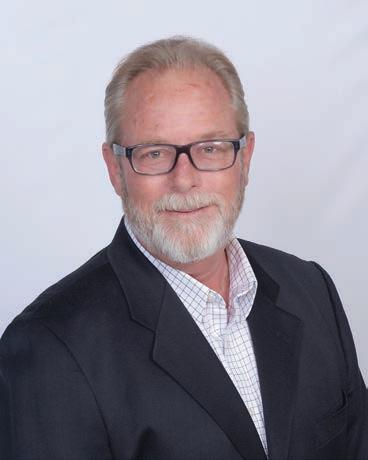
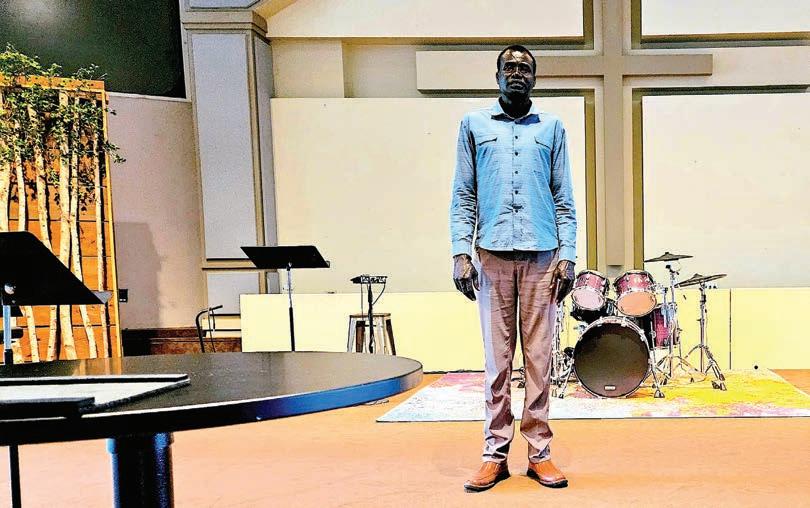

he founded Seeds of South Sudan, and he’s made his presentation at churches in Denver and in the northern suburbs, as well as in Nebraska.
Garang spoke at the Secular Hub, 254 Knox Court in Denver on June 28 and at Denver’s Montview Presbyterian Church in Westminster’s Covenant Living on June 29.
His Denver Metro tour continues at 9 and 10:30 a.m. July 13 at Northglenn Christian Church, 1800 E. 105th Place in Northglenn. Check the website: https:// seedsofsouthsudan.org for updates and more information.

Program costs have far exceeded initial estimate presented to voters
BY SARA WILSON NEWSLINE COLORADO
e head of Colorado Parks and Wildlife told lawmakers on Monday that it is the department’s “preference” to release more wolves into the state next year, despite calls to pause the reintroduction program.
“I don’t have the right answer to whether or not a pause is the right thing to do, or get the last 15 (wolves) out and move on to the management piece,” CPW Director Je Davis said. “Every time we release more animals, it’s more emotional and di cult for us to pull o that operation, and it’s also challenging for the (livestock) producers at the same time.”
Davis appeared in front of the Colorado Legislature’s Water Resources and Agriculture Review Committee to give an update on the state’s wolf reintroduction plan, which voters approved in 2020. Wildlife o cials have released 25 wolves in the state since December 2023 from Oregon and Canada.
e original goal was to release 10 to 15 per year for three to ve years, beginning in 2023, to get to a stable population of at least 50 wolves in the state.
Davis said the department’s preference is to sign a new agreement with British Columbia to relocate more wolves from Canada.
But the program is highly controversial,
especially among rural Colorado farmers and ranchers who decry wolves killing their livestock. Between April 2024 and April 2025, wolves killed at least 25 cattle and sheep, according to the recently released annual report on the reintroduction e ort.
e Copper Creek pack was responsible for many livestock deaths in Grand County in 2023, prompting to CPW to capture the six wolves last September and release them alongside the Canadian wolves earlier this year in a di erent part of the state. at decision, producers said Monday, led to an erosion of trust in CPW.
“A depredating pack was known to have depredated in Oregon before they put them in Middle Park. ey had a serious impact there. ey packaged them up, put them away for a while and then they put them back out right in my backyard,” said Tom Harrington, a cattle producer in Roaring Fork Valley and previous president of the Colorado Cattlemen’s Association.
A September 2024 petition led by a coalition of livestock associations and other agricultural interest groups requested a pause in CPW’s planned reintroductions until the department could implement strategies to prevent depredations. CPW’s commissionrejected the petitionin January.
“I believe that we need no more new releases until plans are in place and the basics are working,” Harrington said Monday. “We need metrics to measure the success of what this program is. I believe we can — and here comes that word that I really don’t like — coexist with the wolves that choose to not prey


on our livestock.”
CPW has worked through some of the seven points of the petition, including de ning “chronic depredation” as three or more depredations by the same wolf or wolves within 30 days. e division has also outlined a lethal removal approach that starts by killing one or two wolves, evaluating the pack’s behavior and its e ect on depredation, then considering additional lethal removals. CPW also started a range rider program to deploy riders in areas with high wolf conict to “proactively haze predators using non-lethal techniques,” according to the
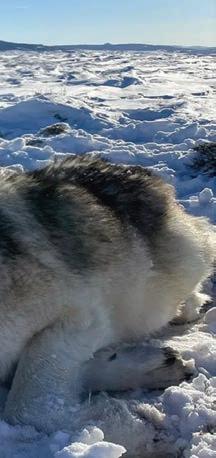

annual report.
CPW killed a wolf for the rst time in May in Pitkin County.
“ e idea of a pause continues to make sense to me, if it creates more time for more robust implementation and completion of those seven items, and maybe now beyond those seven,” House Speaker Julie McCluskie, a Dillon Democrat, said. “But I think the entire reintroduction and restoration is at risk if we can’t get our legs underneath us and be in a position to do this the way we need to.”

Last July, troopers investigated 12 impaired driving fatal crashes
BY MONTE WHALEY MONTE@COTLN.ORG
Welcome to July, the month that racks up the most impaired driving crashes in Colorado. e Fourth of July, meanwhile, remains the most signi cant holiday for those violent crashes, the Colorado State Patrol says.
Over four years, from 2021 through 2024, Colorado State Patrol troopers have investigated over 2,450 fatal and injury crashes determined to be caused by impaired drivers. Year after year, the number of impairment-related crashes expands during the warmer months, with the peak month for impaired crashes being July, according to the CSP.
“Last July, troopers investigated 12 impaired driving fatal crashes that resulted in the loss of 13 people. An additional 32 people were left with serious injuries during this month from impaired drivers,” said Colorado State Patrol Chief Matthew C. Packard, in a news release. “We are imploring people who have risked taking substances and driving in the past to change
their behavior,” said Packard, noting driving while impaired has long-term consequences beyond just getting a citation.
“Driving intoxicated is literally rolling the dice with your license, your freedom and your life,” Packard said.
In 2024, Independence Day tied with New Year’s for the most common holiday that Colorado State Troopers responded to investigate a crash (property, injury or fatal) involving an impaired driver, according to the news release. Both holidays had 22 instances. Halloween was next with 17 and Labor Day and Christmas each had 16 accidents involving impaired drivers.
“You have the freedom to choose your sober driver,” said Packard. “When you fail to do your part, and your driving behavior concerns an o cer to pull you over, the consequences will be life-changing. A DUI conviction leads to a criminal record and is generally not eligible to be expunged.”
In addition, DUIs become a matter of public record, meaning information is accessible to the public. A DUI conviction also impacts your driving record. erefore, DUI convictions can impact many aspects of your life when a background check or driving record is required, the news release states.
BY MONTE WHALEY MONTE@COTLN.ORG
Westminster city o cials say they want clear and to-the-point signs that warn walkers, joggers and bikers using a trail near the shuttered Rocky Flats nuclear weapons plant that they could be exposed to dangerous radioactive and chemical contamination.
City councilors this week were shown three potential warning signs that could be posted on the Rocky Mountain Greenway Trail and near the Indiana Street overpass.
Critics say soil from the Greenway Trail, which leads from Rocky Flats, is still heavily tainted with deadly plutonium. Critics worry that trail’s users will bring that contamination into Westminster.
City councilors in 2024 narrowly agreed to drop their support for the Greenway Trail, swayed by testimony from advocates that the trail would spread contamination from Rocky Flats.
Councilors seemed inclined to prefer a sign a xed with strong language warning about the dangers of Rocky Flats contamination, which includes the international symbol of radioactivity. e signs should also emphasize some background on the Rocky Flats controversy, councilors said.
Mayor Pro Tem Sarah Nurmela brushed aside recommended language that began by listing the vegetation along the trail.
Alleged assault happened in 2016 when victim was at Landmark Academy
BY MONTE WHALEY MONTE@COTLN.ORG
A former teacher at Landmark Academy in Commerce City faces a felony sexual assault on a child by one in a position of trust charge after police investigated an incident in 2016.
e teacher – 44-year-old Michelle McMillan – turned herself in on June 29 to the Adams County Detention Center. Commerce City Police said in a news
release that the victim came forward to a parent in December 2024, alleging that in 2016, when he had been attending Landmark Academy, he was sexually assaulted by McMillan.
McMillan was employed as a teacher at the time of the alleged assault.
McMillan is no longer employed by the Brighton 27J School District, said district spokeswoman Janelle Asmus. No one could be reached for comment at Landmark Academy, which is a K-8th school.
A warrant was issued for McMillan’s arrest last week after an investigation by the Commerce City Police Department and Brighton Police Department’s combined Sexual Assault Task Force, ofcials said.
Representatives from CPW also told lawmakers Monday that the cost of the reintroduction has reached about $3 million. In 2020, voters were given an estimate of about $800,000 for the program. “I understand a lot of this money is going to ranchers and producers to help to compensate them,” Sen. Dylan Roberts, a Frisco Democrat, said. “ at’s money hopefully being well spent, but
that’s also money in the state of Colorado right now — in the budget situation we’re in — that is not going to xing potholes in roads. It’s not going to classrooms across the state. It’s not going to people who are losing their health care and many who are about to lose their health care. is seems out of control.”
Davis said there are a lot of factors that go into realizing the reintroduction plan that were not considered in the ballot cost estimate, such as the state’s decision to compensate for livestock weight loss and fewer pregnancies due to wolf presence and the high cost of beef.


“ e vegetation is not why we have the sign up,” Nurmela said. “We need to jump right into the radiology.”
City sta members will bring back a sign for an o cial vote at a later date. e cost of cityproduced signs would range from $10,000 to $20,000.
e alternatives were written with proposed language submitted from the U.S. Fish and Wildlife Service, Boulder County, and the Rocky Mountain Peace and Justice Center.
e sign preferred by several anti-Rocky Flats activists reads in part that: “Persons on the Rocky Flats National Wildlife Refuge may become exposed to radioactive and other hazardous materials through dust in the air or contact with the soil. ese materials are invisible to the naked eye and may be carried home in dirt on shoes, bicycle tires, or other personal e ects.”
It adds that plutonium is the primary radioactive contamination on the Rocky Flats National Wildlife Refuge. “Plutonium emits alpha radiation, which cannot be detected by a Geiger counter, and it will remain radioactive for more than (100,000) years.”






This week, I learned about the Finnish word “sisu.” ere is no good English translation of the word, so I spent some time seeing what I could nd out about it.
I discovered that it is a word that has been around for more than 500 years, and that Finnish people see it as integral to their designation by the United Nations as the happiest people in the world.
Not having any background in the Finnish language, I had to rely on di erent sources to nd the meaning of the word. As I dug, I found that sisu means courage, stamina, and perseverance combined with exibility and cleverness to create an ingenuity that allows individuals to overcome obstacles.
As the meaning of sisu became clear, I was struck by how important this idea is for overcoming struggles.
To truly face di culty in life takes great
Spring came early this year on the mountain slopes near Crested Butte. David Inouye has monitored the blooming of wild owers there during the last 55 years. is was not a record year, he reported in May, but it was remarkably di erent from just a few decades ago.
“ irty years ago, owering didn’t start until the rst week of June,” reported Inouye, who studies the timing of periodic biological events in plants and animals, a discipline called phenology. By late April this year, seven species of wild owers had blooms on the slopes of the Rocky Mountain Biological Laboratory.
More wild owers earlier in spring. What’s not to like about that?
In Paonia this year, where Inouye lives, Apricot trees owered in midMarch. Later frosts killed this year’s crop. at, he says, is one harm to earlier spring.
Early springs produced by rising temperatures also have long-term consequences. In 2005, when I rst started writing about climate change, I traveled to the outdoor laboratory at Gothic to see an experiment then underway. John Harte, a scientist from Berkeley, had mounted electric heaters over plots to approximate future temperature increases. How would this change vegetation over time? Would sagebrush eventually replace the wild owers?
e answer is complex but comes down to one word: yes. We can expect more sagebrush and fewer wild owers on south-facing hillsides at 9,500 feet in elevation. is, Inouye pointed out, will take time. “Almost all the wild owers here are long-lived perennials, so change doesn’t happen rapidly. Even if they stop making seeds, some of those individual plants will still live for decades,” said Inouye, who lives in Paonia but remains on the facul-




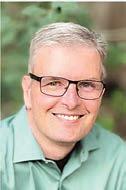
courage. I saw this with my friend Shane as he navigated a fouryear battle with cancer. I know from my own experience with MS, the courage it takes to get up each morning, to do the things that I must do to be able to move around smoothly.
Along with courage, it takes stamina to navigate an issue. Courage and stamina go hand in hand; you can’t have one without the other when you are traversing di cult times. Our lives do not come with message boards that tell us, “In 127 days, the issues you are navigating will be resolved and you will have 300 days of smooth sailing.” We must move forward
without a clear understanding of what the future holds. To navigate those issues daily, without the bene t of a clear endpoint, takes courage and the stamina to put one foot in front of the other.
But sisu goes further. It declares that courage, stamina, and perseverance are not enough, and explains that to overcome our struggles, we must think differently, be exible in our mindset, and be open to di erent ways of doing things. When we combine grit with exibility, we nd true genius — we nd new ways.
I guess you could write it as a cookbook recipe: add one cup each of courage, stamina, and perseverance to a struggle. Mix in healthy amounts of exibility and openness to new ways of doing things. Bake in the oven of experience, and what will emerge is an ingenuity that will allow an individual to overcome their obstacle.
I think it is exceptionally easy to get
Early flowers again this year. That’s good, right?

stuck in the idea that working harder will lead to victory over a struggle. Sisu opens us up to the idea that it takes more than our internal drive to get over our most di cult hurdles. It takes a di erent mindset.
If you have not thought outside the box in your struggle, maybe it is time. You have got this!
Jim Roome lives in Arvada with his wife, Beth. He spent 34 years in public education. Lessons learned from the one two punch of being diagnosed with MS shortly before his best friend was diagnosed with terminal cancer led him into a new pursuit as a freelance writer and speaker. He uses his life experiences and love of stories to inspire, educate and encourage local, national and international audiences. Contact him at jim.roome@ gmail.com.
It’s


ty of the University of Maryland. “It takes longterm study to document changes to the high-altitude environment,” he added. “To some degree that longevity provides a bu er to the ongoing climate changes, especially if we can succeed in reversing them in the foreseeable future.”
An early spring was observed far beyond Colorado’s mountain slopes. A U.S. Geological Survey website on June 6 showed a spring leaf index two and three weeks early across broad bands of the United States, including Colorado.
Once again, so what? In most places, people prefer summer to winter. Besides, isn’t this story about earlier spring getting old? I have been writing about it for 20 years. One scientist I queried said yet another story about early springs would induce yawns unless I had a new angle, like a spike in electricity demand for air conditioning during April.
Brad Udall delivered a strong rejoinder at a recent Colorado River conference. “Hold on to your seats,” he told his audience at the University of Colorado’s GetchesWilkinson Center, “because I’m going to make you uncomfortable.” e world, explained Udall, a water and climate research scientist at the Colorado Water Institute, is on track for warming of 9 degrees Fahrenheit by 2100. “ is far exceeds anything agreed to by the 2015 Paris Climate Accords. And frankly, it terri es scientists.”
Over land, the temperature increase will be even greater than the global average. “ at’s a world unlike anything we currently know, and it’s going to challenge us all on
every front.”
Nearly all scientists agree that heat-trapping greenhouse gases are responsible for our predicament. Emissions have risen 60% during the last 35 years. “What we’re witnessing is a monumental failure of both capitalism and governance,” he said.
Why sound the climate change siren at a Colorado River conference? Because water availability in the Colorado River Basin is inextricably linked to rising temperatures. Drought can ease. Aridi cation, the result of rising temperatures, will not.
e seven states who share the river now struggle over how to share this shrinking river. e 1922 compact assumed 20 million acrefeet. Flows this century have averaged about 20% less.
“I’m now convinced that we need to plan for the worst possible climate future, and that’s somewhere around 10 million acre-feet runo ,” said Udall. “But what it also means is taking a hard look at every existing agreement in the river. It either breaks them or substantially modies them.”
A hopeless situation? Udall warned against despair. “ ere’s a term called the pessimism aversion trap. It’s the tendency look the other way when confronted with dark realities,” he explained. Don’t go there, he said. “We still control our destiny, even if the solutions seem daunting.”
And nally, his plea: “I plead with you to get serious about guring out how to reduce the emissions of your organization and even your own personal emissions. I agree that individual actions aren’t going to solve this, but they send a really strong signal to everyone around us.”
Allen Best is a Colorado-based journalist who publishes an e-magazine called Big Pivots.

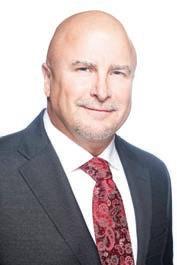
hen the lights are the brightest, the stakes are the highest, and all eyes are watching, those who rise to the moment are rarely surprised by it. Why? Because they’ve been there before. Not necessarily in the stadium, on the eld, or in front of the big client, but in the quiet, gritty, and repetitive hours of practice. ey’ve made the move a hundred times before it ever mattered. Elite athletes, masterful gamers, accomplished performers, these people don’t just show up and “ gure it out.” ey prepare. ey sweat. ey fail. ey adjust. And they do it when no one’s watching, precisely so they can deliver when everyone is.
The practice behind performance Golfers don’t wait for the tournament to learn how to hit out of a bunker or adjust their swing for a downhill lie. ey put themselves through every scenario imaginable before they ever step onto the rst tee. Likewise, tennis pros hit forehands, backhands, and serves over and over again, against lefties, righties, net rushers, and baseliners, so that nothing rattles them during a match. Quarterbacks study defenses and prepare audibles not so they might use them, but because they know they will have to. MLB pitchers memorize hitters’ weaknesses and develop sequences of pitches for each batter, each count, and each game condition. ey don’t leave anything to chance.
Even a recreational skier knows better than to assume every trail is the same. Shifting snow, moguls, icy patches, and tree lines all require anticipation, balance, and muscle memory.
What’s your game plan?
Now let’s bring that down from the slopes, o the eld, and into your life. Because here’s the truth: Life is coming for you. And it’s not always friendly. We live in a world of distraction, disruption, and division, the “3 D’s.” at’s your opponent. And it’s relentless. Curveballs will be thrown. People will lie to you, some subtly, some blatantly. Situations will knock you o balance, surprise you, and frustrate you.
So the question is: Are you ready?
Have you practiced how you’ll respond when the storm hits? Or are you hoping you’ll just “ gure it out” in the moment?
Salespeople who thrive don’t wing it. ey role-play objections before they hear them. ey rehearse how to respond to pricing pushback, to questions about the competition, to ghosting, and to negotiation traps. at preparation, done behind the scenes, becomes uidity in the real game.
The creative process is ever-changing and often requires taking a look back to locate the way forward. e Arvada Center’s three summer exhibitions celebrate this fact by using the past as a guide to nding a way to and through modern times.
“I hope people come away from the galleries with a new understanding of what they can perceive,” said Olive WitwerJarvis, exhibitions manager and associate curator at the Center. “ e personal stories and struggles on display provide a new look at what’s important.”
Melissa Furness — Embedded: A MidCareer Survey, Haley Hasler — Origin Stories and Past is Present is Past is Present are all on display at the Center, 6901 Wadsworth Blvd., through Aug. 24. Set up in the Main Gallery, Embeddedi s an engrossing look at the career of an artist who is constantly nding new ways to explore themselves and the world around them. Broken up into subsections like In Ruins and Gathering Moss, Furness’ shows that she’s a conceptual artist of the highest order. Guests will see work that was created in places as disparate as Ireland and China, each with unique subjects and mediums worked into beautiful paintings.
History and its impact on our current times is a subject Furness — a professor at the University of Colorado Denver — returns to in fascinating ways, from making surreal recreations of well-known works to displaying discarded bricks from China.
“My work explores human nature and




Clarke Reader

struggle as it manifests itself in relation to contemporary society and the remains of the past,” Furness said in a provided statement. “I am interested in what one culture upholds as signi cant — objects and ideals that we revere versus those that we discard or discount as unimportant. What does what we throw away say about us as a people versus what we place on a pedestal or seek to preserve?”
e Upper Gallery is home to Origin Stories, where Fort Collins artist Haley Hasler paints portraits that take her friends and family and put them in elaborately staged settings. e end results are transporting, at once familiar and slightly foreign.
“ is show includes work from the past as well as my newest body of work,” Hasler said in a provided statement. “ e beloved, everyday people around me are transformed in my paintings into gods and goddesses of the everyday realm.”
In Past is Present is Past is Present, located in the eatre Gallery, visitors can see how Colorado artists use their ancestry, religious and cultural iconography, and mythology to shed a light on contemporary concerns, like our tumultuous political climate and missing Native women and children. e works are fascinating examinations of the artists’ relationship with the past and provide a

window into the things that matter most.
“ ese exhibitions question what’s important and why,” Witwer-Jarvis said. “What makes something like the Mona Lisa so important, when there is so much happening in people’s day-to-day life?”
For more information, visit https://arvadacenter.org/galleries/current-exhibitions.
Go for a Moonlit Ride in Castle Rock Castle Rock’s Pedal the Moon bike ride goes from 6:30 to 10 p.m. on Saturday, July 12 and departs from Castle View High School, 5254 N. Meadows Drive, at 7 p.m. As dusk starts, riders will follow the East Plum Creek Trail for about 6 miles to Festival Park.
According to provided information, the terrain is suitable for all riders and participants are encouraged to decorate their bikes with lights and other items.
ere will be a decorating station for those who want some glow-in-the-dark decorations. At Festival Park, riders can relax and enjoy some music while participating in some giveaways.
Full details and registration information is available at https://www.crgov. com/3184/Pedal-the-Moon.
Feel the Artistic Power of ‘Mutual Terrain’ RedLine Contemporary Art Center is celebrating Denver Month of Photography withMutual Terrain, curated by Adán De La Garza and Jenna Maurice. e show is on display at the Center, 2350 Arapahoe St. in Denver, from Friday, July 11 through Sunday, Aug. 3.
According to a provided statement from the curators, “Mutual Terrain’brings together six artists whose works reveal the land as a living presence — one that remembers, resists, and responds. is exhibition invites viewers to reconsider their relationship to the natural world, not as separate from it, but as deeply entangled within it.” e show encourages and rewards patience, so be ready to take your time. Find more information at https://www. redlineart.org/mutual-terrain-denvermonth-of-video-mov.
Clarke’s Concert of the Week — Car Seat Headrest at Mission Ballroom
Virginia’s Car Seat Headrest are one of the most ambitious bands in the indie rock world. Over the course of their career, they’ve experimented with all kinds of stylistic approaches, from kindof rock operas to just straight up ripping rock albums. You never quite know what you’re going to get, but the lyrics are always extremely literate and the music is top-notch.
In support this their latest release, e Scholars, the band is coming to the Mission Ballroom, 4242 Wynkoop St. at 8 p.m. on Saturday, July 12. ey’ll be joined by openers Slow Fiction for what’s sure to be an evening of great, adventurous live music. Get tickets at www. axs.com.
Clarke Reader’s column on culture appears on a weekly basis. He can be reached at Clarke.Reader@hotmail.com.


















Benefits might outweigh environmental impacts
BY PAIGE GROSS NEWSLINE COLORADO
Environmental scientists and conservationists have been slow to embrace arti cial intelligence tools, in large part because of the enormous amount of electricity the technology demands.
But that, some say, is slowly changing as the potential bene ts of AI become clearer.
“I’m not a huge AI fan. If I can avoid it, I do, because I always think about the environmental implications rst,” Californiabased sustainability consultant Jennifer Brandon said. “But I am starting to see it around me and see the bene ts of it, especially with these huge data sets that we have.”
In one recent example, an Arizona State University climate tech project provides up-to-date water conservation information and suggestions for responsible water use over the last year via a simple, personable chatbot called “Blue.”
While Blue has given residents an easy, personalized resource to understand the state of water needs across the state, the environmental workers and researchers behind it carefully measure the overall impact of the project. Blue has been optimized to use less energy than similar tools, in a nod to the environmental mission of the project. Current arti cial intelligence systems require enormous power to drive data centers, and water to keep them cool.




Environmentalists have been slow to adopt AI models becuse of the energy needed to use the technology. But some are reconsidering based on the sheer amount of data the technology can process.
trial, municipal, agricultural, tribal and international partners together to try new strategies for water conservation.
“I think that it is not necessarily as clear to everyday Americans, about the connection between the development of AI and the physical infrastructure behind the technology and the subsequent energy, water and land use,” said Dave White, the director of the Global Institute of Sustainability and Innovation at ASU.
Tech innovation over the last decade has expanded the ways environmentalists can explore sustainability and conservation strategies, White said. But the decision to use newer tech tools, like AI models, which require physical infrastructure and large amounts of energy, water and other resources, isn’t a straightforward one for those interested in conservation.
Concerns that AI’s spotty factual accuracy could be a problem in the highly regulated world of environmental projects have also slowed the adoption of AI by those working in it.
For White and others, however, the potential gains made in the environmental sector need to be weighed against the negative environmental impact the technology creates.
“Sustainability is all about consideration of trade o s,” White said. “Can we get to net positive, where the energy consumption for the data centers that are backing AI is worth the value of gains that we’re potentially seeing on the conservation side? at’s where I would frankly say there’s not nearly enough critical evaluation and questioning of that issue.”
How is AI used in environmental work?
Blue is one example of the tech-forward projects that the university is developing for more sustainability in the climate, energy, water and agriculture sectors. e
Julie Ann Wrigley Global Futures Laboratory launched the chatbot after receiving a $40 million investment from a statewide project within ASU, the Arizona Water Innovation Initiative, which brings indus-
White said that the best uses of AI that the University’s research projects have found have been in modeling, monitoring, management, prediction, simulation and scenario planning. An example of that is a recent study that used satellite observations, land surface models and data to track changes in total water storage in the Colorado River basin.
“With new technology also, we’re able to link things like satellite-based observations with computer models that incorporate climate change and have that information inform our water resource management agency to help them be more e cient in the way that they manage the existing resources,” he said.
Outside of the university, White said he’s seen AI successfully help within the energy sector with demand management — modeling when equipment may break down or scheduling the optimal use of grid operations.
“I would say climate change, adaptation, mitigation is one area where we’re seeing promise,” White said. “In climate, we’re looking at opportunities where these AIenabled tools, particularly those that are integrated with control systems and operating systems, can really help to optimize.”
Brandon said she’s seen some form of AI use in the sector for at least a decade.
She remembers a classmate developing a machine learning algorithm to identify plankton during one of her Ph.D. lab courses.
“We could suddenly sort all of these images so much faster,” Brandon said. “And so there’s a lot of things like that. ey are trying to train AI on databases to see huge patterns of that data that would take us years and years to see those same patterns.”
Brandon also mentioned the growing practice of tracking carbon credits on blockchain, a distributed public ledger that isn’t AI based, but is often used in
When AI is your sustainability business plan For Amrita Bhasin and her business partner Gary Kwong, their homegrown AI model is the foundation of their logistics company, Sotira, that directs overstock consumer goods and excess food away from land lls to other sellers or food
ey built their AI model to plan and optimize the logistics of getting excess food and commercial items across the country to places that can use or sell them for a discount. e model helps make connections between suppliers, buyers and charities, and predict the most ecient way to get goods where they need to
It’s a process that Bhasin, the company’s CEO, said would traditionally involve several phone calls, freight staging and coordination between trucks.
“Every single time you pack trucks more e ciently, you reduce the number of trucks on the road, and that makes a carbon emissions impact,” she said.
e pair won a grant from California organization StopWaste last year to ramp up its ability to get excess food to charities and nonpro ts in need, in line with new regulations in the state that say grocery stores must donate excess food instead of throwing it away.
conjunction with AI technologies. Brandon said the carbon market hasn’t taken o previously because carbon credits weren’t easy to track, but blockchain provides transparency with a signature attached to each credit.
What’s holding environmentalists back?
Brandon described herself as more cautious about AI than some of her colleagues — “I’m an AI skeptic,” she said.
But she will be exploring AI on an upcoming research project to measure microplastics in minutes, as opposed to days, as is currently practiced. An AI algorithm will help her team identify what they’re seeing, instead of sorting them by hand and with lasers over several days.
Brandon said she’ll only consider AI where she sees a positive cost-bene t analysis or major time or energy savings. She’s also put o by inaccurate results given by AI, based on the data or information a model pulls from.
“ e accuracy is just not there yet,” she said.
It’s also a hindrance for Keith Lambert, president of Oxidizers Inc., an air quality systems company. While Lambert said he’s experimented with commercial AI products like OpenAI’s in his personal work, real-world engineering with AI presents a lot of risk.
Environmental work involves a lot of regulatory compliance, Lambert said, and any mistakes made by AI could cost a company or organization its ability to operate, or nes of tens of thousands of dollars a day.
“Clean data in, clean data out. And that’s the issue with AI right now, is where do you get true clean data?” Lambert said. “So you know that your actual metrics and the decisions, and the rami cations are in line.”
Lambert said he considers the environmental impact of AI, though every action humans take has an impact. It’s about weighing the impact with the progress, he said, and for now, AI’s too risky to make a signi cant part of his business.
Bhasin said she’s seen AI help with transparency within her industry and in helping with document-heavy compliance. It’s the “old school” industries like logistics and healthcare that could stand to see the biggest impact of AI, she said — “think about how much time it takes Americans to ll out insurance paperwork.”
“If AI were to automate all of that compliance, like the [current procedural terminology] codes, that has a huge impact on society, I would argue, more so than like, making better Net ix recommendations or generating a better headshot,” she said.
Because they’ve built their own AI model, Sotira doesn’t rely much on generative arti cial intelligence, which has a bigger environmental impact than simpler machine learning models. ey also track the tokens — or amount of data processed with AI — each month to understand how much computing and energy they use.
It’s a lot of mental math, she said.
“I do think that the only way to know that you’re doing good in this world is to know, like, we have rerouted 2 million pounds of overstock from land lls,” Bhasin said. “You can actually calculate it — ‘ is is how much carbon we have saved from the atmosphere, and this is how much AI I’m using, this is how much water and energy I estimate is from my AI.” ose in the climate and environmental space will likely continue doing that mental math more than other industries in deciding how or if to move forward with AI.
AI-cautious Brandon is hearing more projects or uses lately that she sees potential in, like AI helping make recycling easier, or AI platforms that provide real-time analysis of biodiversity data. But personally, she’ll continue to do a cost-bene t analysis before using AI.
“I feel like in my work, it has to have a huge bene t to outweigh the costs, because it’s just not worth it to me otherwise,” Brandon said. “And so when I see people using it to make their email sound better or to make their gures look a little nicer, yeah, I’m like, it’s not worth that.” is story is from Colorado Newsline. Used by permission. For more, and to support the news organization, visit coloradonewsline.com.
Family, nonprofit healthcare organizations discuss impacts of potential cuts
BY ISABEL GUZMAN IGUZMAN@COLORADOCOMMUNITYMEDIA.COM
Tim and Kara Norick of the Littleton area adopted their second-youngest son of six children, Malakai, from China in 2016, when he was almost 3 years old. Malakai was found on a bridge in China at just days old in dire medical condition and was rushed to a hospital in Shanghai, where he was diagnosed with severe pneumonia, organ failure and other complex medical conditions.
After almost three years in an orphanage, Malakai was adopted and brought to join his new family near Littleton.
After being treated at Children’s Hospital Colorado, Malakai was diagnosed with Opitz G/BBB Syndrome — a rare condition a ecting the entire midline of his body.
“ ink about anything that crosses through your midline like your digestive system, your trachea, your lungs, even your eyes and your nose, are all impacted by the syndrome,” Tim Norick said.
Now almost 12, Malakai has undergone several surgeries and treatments, and even received a custom-built larynx, or “voice box.”
e Noricks have private health insur-



ance to keep up with Malakai’s medical costs and use Medicaid, or government issued health insurance, to supplement.
“Children’s Hospital gave us a caseworker o the bat and we were very grateful for that because they were able


to do a lot of the front work (setting up) Medicaid support (which) we’ve had since the very beginning,” Kara Norick said.
Medicaid helped cover costs for Malakai’s growth hormone medication,







something the Noricks’ private insurance wouldn’t pay for.
Additionally, Kara Norick said their primary insurance paid for feeding tubes, but not for Malaki’s Malone tube, a small tube that empties bowels. Medicaid paid for Malakai’s Malone tube equipment.
Because of the several times Medicaid was able to cover costs for Malakai’ health, the Noricks are avid supporters of preserving Medicaid.
As part of Children’s Hospital Association’s Family Advocacy Day, the Norick family recently traveled to Washington, D.C., with 60 other patients and their families to advocate for preserving Medicaid amid the potential cuts being debated in Congress. Kara Norick said she was impressed with how legislators spoke with Malakai and made him feel valued.
“It was a breath of fresh air to see how truly bipartisan things can be,” she said.
Medicaid under the ‘big, beautiful bill’ e budget consolidation bill, H.R.1, commonly referred to as the One Big Beautiful Bill Act, was introduced by House Republicans. It aims to “reduce taxes, reduce or increase spending for various federal programs, increase the statutory debt limit, and otherwise address agencies and programs throughout the federal government,” according to the bill’s language.








BY JOHN RENFROW JOHN@COTLN.ORG
For the rst time, an All-Star showdown is set between the Western Ultimate League and the Premier Ultimate League during the 2025 United Frisbee Association Championship weekend. ree Colorado Alpenglow players are making the trip to Madison, Wisconsin, on Aug. 23 to represent the WUL. e Alpenglow is an ultimate frisbee team of women and nonbinary players that plays at the Pinnacle Athletic Complex in ornton. Founded in 2022, the Alpenglow has seen quick success, and the team is the reigning 2024 WUL Champions.
Colorado’s Allysha Dixon, Jade McLaughlin and Abby orpe are joining


17 other WUL All-Stars from the seven teams in the league and will take on 20

Ari Nelson, also on the Alpenglow, didn’t make the All-Star team. e rosters were determined by fan voting and team nominations.
According to the WUL’s website, “these players represent the best of what both leagues have to o er — elite skills, unmatched athleticism and leadership on and o the eld. More than just a showcase of talent, this event is a celebration of the community, the progress, and the players pushing professional women’s and nonbinary ultimate forward.”
e Alpenglow nished 6-0 in the 2025 season before falling short in the playo s. Coaches omas Echols, Lena Goren and Madison Oleson won Coaching Sta of the Year.
e WUL versus PUL All-Star Game begins at 5:00 p.m. E.T. on Aug. 23. Tickets are available at watchufa.com/league/ champweekend, and the event will be live and free on YouTube.
Building a values-based foundation
You need a life playbook, too. And it starts with knowing who you are, your values, beliefs, and anchors in the storm. When division shows up, is unity your move? When adversity knocks, do you respond with resilience? When o ense is hurled your way, do you o er grace? If the world throws chaos, confusion, and cruelty at you, what are your practiced responses? Are kindness, humility, forgiveness, and compassion just ideas you agree with, or are they moves you’ve practiced until they’re second nature? Make no mistake: Life will challenge you. It will confront you with opponents in the form of circumstances, people, and inner voices that test your core. If you haven’t prepared, you’ll default to panic, anger, or paralysis.
You’ve got the next move
So today, right now, it’s your move. Not in some hypothetical, far-o , big-mo-
ment kind of way. But in this moment. You get to decide what you’re practicing. Because what you practice in private is what you’ll perform in public. What conversations are you rehearsing? What mindset are you building? What virtues are you strengthening so they’re not just concepts, but quick-draw responses?
Don’t wait for the game to start to prepare. Because, ready or not, it already has, and the next move is yours.
How about you? Are you more likely to take things as they come and deal with it all in the moment? Or are you someone who prefers to be prepared, like the U.S. Coast Guard, Semper Paratus, always prepared? Either way, I always love hearing your stories at gotonorton@gmail. com and when we take the time to plan to win and prepare to win, it really will be a better-than-good life.
Michael Norton is an author, a personal and professional coach, consultant, trainer, encourager and motivator of individuals and businesses, working with organizations and associations across multiple industries.
players representing the PUL. Surprisingly, WUL O ensive Player of the Year
e state says the form is con dential and doesn’t ask about immigration or citizenship status. It typically requires household income information, the last four digits of a Social Security number (or a note if none is available) and a signature.
Household size and income determine eligibility. For example, a family of four earning $41,795 or less quali es for free meals, while those earning up to $59,478 qualify for reduced-price meals.
e Colorado Department of Education, as well as district nutrition services departments, provide a comprehensive eligibility chart.
Beyond meals, qualifying families may also receive discounts on internet, testing fees and other student services. Foster children automatically qualify for free meals and students experiencing homelessness or enrolled in Head Start may also qualify.
Families can submit applications at any time during the school year, espe-
For more information, visit coloradoalpenglow.com.
cially if a household’s situation changes, such as a job loss or a change in family size. ose who receive public assistance can include a case number to expedite the automatic eligibility process.
State o cials note that families who receive a letter from their district stating that a child quali es may not need to apply unless the notice omits the child’s name.
Eligibility lasts through the school year and extends 30 days into the next.
O cials warn that some families may end up paying full price for meals if their school does not participate in the universal free meals program and if eligibility expires.
e Healthy School Meals for All program currently has funding through December 2025. State o cials say voters may be asked to approve additional funding through a ballot measure later this year to continue the program beyond that date.
More information is available through district nutrition services pages or on the Colorado Department of Education’s website, at www.cde.state.co.us./nutrition/determine-program-eligibility online.








1. ANIMAL KINGDOM: What is a female goat called?
2. TELEVISION: What is the name of the town in “Gilmore Girls”?
3. GEOGRAPHY: How many states does the Appalachian Trail cross?
4. MOVIES: Which actress voices the character Jessie in “Toy Story 2”?
5. U.S. PRESIDENTS: What is believed to have caused President Zachary Taylor’s death?
6. ANATOMY: What is the most abundant protein in the human body?
7. GEOMETRY: How many sides does a hexagon have?
8. LITERATURE: Serial killer Hannibal Lecter rst appears in which novel?
9. ASTRONOMY: What are planets outside our solar system called?
10. MUSIC: Who was the rst women inducted into the Rock & Roll Hall of



Fame?
Answers
1. A doe or nanny.
2. Stars Hollow.
3. 14.
4. Joan Cusack.
5. Acute gastroenteritis.
6. Collagen.
7. Six.
8. “Red Dragon” by omas Harris.
9. Exoplanets.
10. Aretha Franklin.
(c) 2025 King Features Synd., Inc.




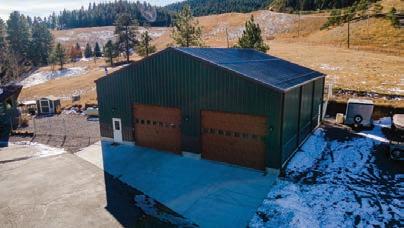














Ranging from tax cuts to implementing new work requirements to qualify for Medicaid and SNAP, the bill narrowly passed in the Senate on July 1 and went back to the House of Representatives for another vote.
e Congressional Budget O ce estimated that H.R.1 would decrease federal Medicaid spending by $793 billion because of new work requirements that the o ce said would cut insurance coverage for 10.3 million people nationwide.
According to WhiteHouse.gov, the bill will strengthen “the integrity of Medicaid by eliminating waste, fraud and abuse.”
Kara Norick said she worries about keeping Malakai on his necessary medications as he gets older.
“We are proponents of trying to be as independent as you can,” Kara Norick said. “But unless I am making (the medicine), administering it, doing everything, it’s seen as: ‘oh, he’s independent, he doesn’t need it.’”
The local Medicaid battle
For Doctors Care, a nonpro t clinic in Littleton, the cuts to patients’ Medicaid coverage could cost the clinic thousands. e organization is currently losing $20,000 per month in Medicaid funds from the now-ended Public Health Emergency’s Continuous Coverage Unwind that was established in response to the COVID-19 pandemic. e clinic doesn’t turn away anyone who can’t a ord a visit and uses a sliding fee scale, for which the price of services and medication are adjusted to what a patient can pay. Currently, 30% of Doctors Care’s patients are uninsured.
“We’re going to see another 5-to-15% of people who will become uninsured, and that just places so much pressure on
the overall healthcare system,” said Bebe Kleinman, CEO of Doctors Care.
Elizabeth Hockaday, Doctors Care’s development and marketing director, said while the clinic will continue its mission of serving all patients regardless of insurance status, the lack of income has pushed the facility to rely on donations.
“Charitable giving can be just as volatile sometimes as whatever is happening in politics and the stock market,” Hockaday said.
Kleinman said Doctors Care’s partners with other nonpro ts that o er resources for food, housing and community engagement are also in a vulnerable position.
“In previous years when budgets have been in crisis, there might be one partner that is in a dip,” she said. “But what we’re seeing now is that there’s really no part of the community safety net that isn’t under attack. at’s very impactful to the patients we serve.”
Since H.R.1 would also seek to decrease federal spending on SNAP, Kleinman said she is worried about people losing food resources, which would affect the health of many. Patients who have access to nutritious food, have housing and are employed are easier to care for than when they wait too long to see a doctor due to medical costs and become very sick, according to Kleinman.
Hockaday said the stress put on the healthcare system then impacts nurses, doctors and other hospital sta who become quickly burned out from treating an in ux of sick and diseased patients.
Colorado Access is a nonpro t public sector health plan that exclusively serves public programs like Medicaid and children’s health insurance. Colorado Access CEO Annie Lee said the company acts as a connection point between the state, Medicaid providers and its members.
“ e work requirements in the recon-
NOTICE OF BUDGET HEARING FOR THE NORTH METRO TASK FORCE
NOTICE IS HEREBY GIVEN that the Board of Governors of the North Metro Task Force, Adams County, Colorado, has been presented a proposed budget for the year 2026. A copy of the said proposed budget will be available for public inspection at the Adams County Finance Department, 4430 S. Adams County Parkway, 4th Floor, Brighton, CO 80601. If you would like to request a copy of the proposed budget amendments, please call 720-523-6239 during business hours, which are Monday through Friday 7:00 a.m. to 5:30 p.m. Such proposed budget for 2026 will be considered for adoption by the
Board of Governors at a public hearing to be held at 9:30 a.m. Thursday, July 24th, 2025, at the Adams County Government Center, Conference Room W8101, 4430 S. Adams County Parkway, Brighton, Colorado 80601. Any interested elector may inspect the proposed budget and file or register any objections thereto at any time prior to the final adoption thereof.
Board of Governors of North Metro Task Force
First Publication: July 10, 2025 Last Publication: July 10, 2025
Commerce City Sentinel Express


ciliation bill is a huge concern,” she said.
“ is is a big administrative burden to be placed on states.”
Lee said in 2023, when the Public Health Emergency Unwind ended, 800,000 Coloradans lost Medicaid coverage. According to the Urban Institute, at least 120,000 Coloradans are expected to lose coverage due to the introduction of Medicaid work requirements alone, with more likely mistakenly disenrolled.
“When people can’t access health care, they’re getting sicker until they get care, usually at the emergency department … people shouldn’t wait until they’re terribly sick to get care — and when it’s the most expensive care,” she said.
e cost of expensive medical intervention that is not compensated begins a ripple e ect on the healthcare system, Lee said.
“Having our members lose coverage is painful and it’s also painful to know that our providers will not be able to access the kinds of revenues that they need in

order to stay a oat to continue serving their communities,” she said.
Both Lee and Kleinman said they are “weathering the storm of uncertainty” each day, waiting to see if the bill passes and how soon changes will be ordered. ey addressed the perception that Medicaid is an abused welfare resource.
“Medicaid saves lives,” Kleinman said. “We judge what self-su ciency looks like and most of us are not in a position to be judging others.”
Lee echoed the importance of Medicaid for children: “We know cases of kids born with severe developmental delays and diseases that are very di cult and expensive to treat, and if not for Medicaid, they wouldn’t be able to go on and live their lives.”
For Malakai and his parents, Medicaid lls in the gaps that primary insurance can’t.
“Medicaid can provide life-a rming care that Malakai would not have otherwise,” Tim Norick said.
Public notice is given on June 9, 2025, that a Petition for a Change of Name of an adult has been filed with the Adams County Court.
The petition requests that the name of Taccara Asrieal Evans be changed to Taccara Asrieal Pettis Case No.: 25 C 1018
By: Deputy Clerk
Public notice is given on June 23, 2025, that a Petition for a Change of Name of a minor child has been filed with the Adams County Court.
The petition requests that the name of Justin James Ross be changed to Rory James Ross Case No.: 25 C 1154
By: Deputy Clerk Legal Notice No. CCX1767 First Publication: July 10, 2025 Last Publication: July 24, 2025




















